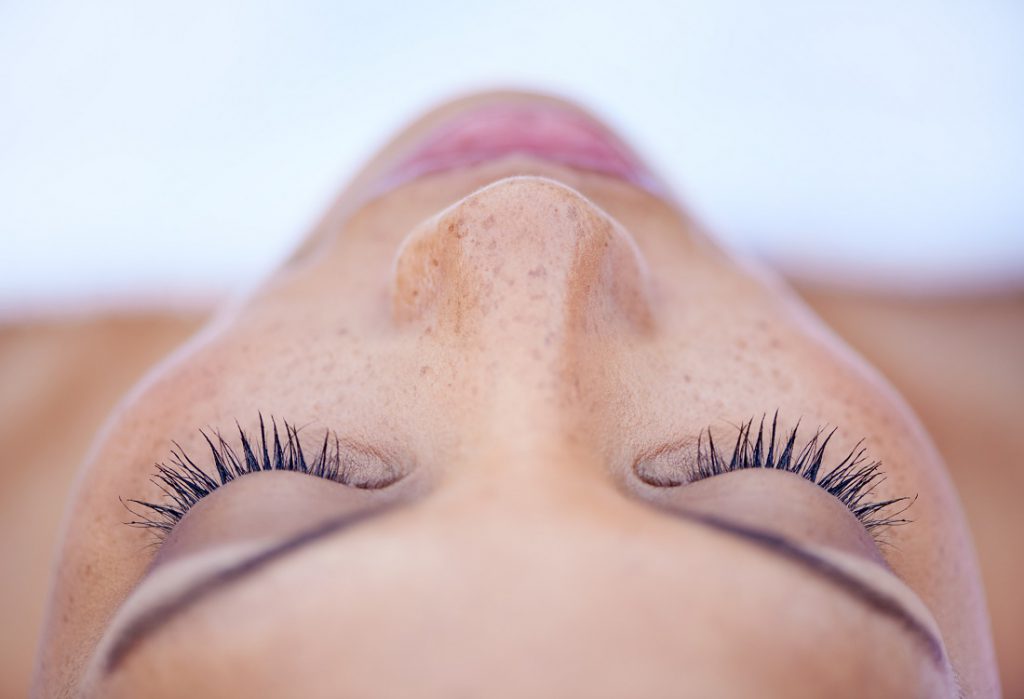Summer has come and gone, and all of our beach umbrellas, pool toys and grills are destined to remain in the storage shed until next year. But as the weather cools down, some vestiges of the summer months just won’t disappear: including sun damage sustained by spending time at the pool or beach without adequate sun protection. Hopefully you’ve been careful this summer, but you may still have acquired some damage. If this year’s warmest months (and all of the previous summers) have left you with dark spots, fine lines and other signs of sun damage, it is possible to improve the situation.
It can be difficult, however, to wade through all the anti-aging creams, serums and treatments on the market. Which ones are worth it? And how can you tell which approach is best for you? I called in David Bank, MD, a dermatologist practicing in Westchester, New York, to help explain the options for reviving tired, sun-damaged skin.
Get Your Vitamin A
If you slacked on your sun protection this summer and want to lessen the damage, the number one ingredient you should look for is retinol, according to Dr. Bank.
“It’s the gold standard,” he says. “Other than women who are pregnant, pretty much anyone can use a retinol.”
Retinol, a derivative of vitamin A, works by encouraging cell turnover and increasing collagen production, both of which help set damaged skin cells on a healthier course. Available both over-the-counter and in prescription strengths, retinol works to combat nearly all of the signs of sun damage.
“It can help color, tone and texture,” says Dr. Bank. “It can even out pigmentation and help fade brown spots. It can make the skin smoother and softer, and even diminish fine lines and wrinkles.”
One downside to the product is that it may cause irritation, redness or dryness if you have sensitive skin. Start by using retinol a couple of times a week, then bump up your application if your skin isn’t irritated. Dr. Bank says there are many different retinol products on the market, which vary in formulation (including gels and creams) and strength (generally, retinols obtained with a prescription are stronger), so you can find a product that works with your skin type.
There are several other types of topical treatments available for treating signs of premature aging, and though none are as commonly recommended as retinol, the science behind them looks promising. One example is over-the-counter products containing DNA repair enzymes. Some studies have shown that they’re capable of preventing collagen degradation and brown spots.
Laser Away
Lasers are another effective treatment for the signs of sun damage, and Dr. Bank says there are a number of different approaches.
“Some lasers target the pigment melanin, so they’re basically designed to zap away sun spots,” he explains.
According to Dr. Bank, lasers can also treat a lesser-known effect of sun damage — tiny broken blood vessels around the nose and middle of the face. The sun breaks down the collagen that supports these vessels, causing them to crack, which then leads to visible redness of the skin.
Dr. Bank says another type of laser treatment actually works by causing very “delicate and controlled” injury to the skin. Though causing any type of injury to already sun-damaged skin may seem counterproductive, he explains how it can be highly beneficial in reversing the effects of UV rays.
“This treatment turns on the healing and repair mechanisms in the skin, which basically put down fresh, healthy skin cells and collagen.”
It’s a good idea to speak to a professional dermatologist when considering any kind of serious treatments for sun damage. Whether you’re thinking about a prescription or over-the-counter retinoid, laser treatment or a combination, a doctor will be able to provide recommendations based on your skin.
Damage Control
Dr. Bank’s number one recommendation for preventing sun damage, though?
“Sunscreen, sunscreen, sunscreen!”
The research backs him up — one 2013 study found that people who use sunscreen with an SPF of 15 or higher daily show 24 percent less skin aging than those who do not use sunscreen daily. But sunscreen is only one part of a complete sun protection regimen. You can take further action against sun damage by covering up with clothing, hats and sunscreen and seeking the shade, especially between 10 AM and 4 PM when the sun is strongest.
“Just starting to be careful with sun protection will, alone, help reverse sun damage,” Dr. Bank says. Like other organs of the body, the skin has a natural tendency to want to repair itself.”





